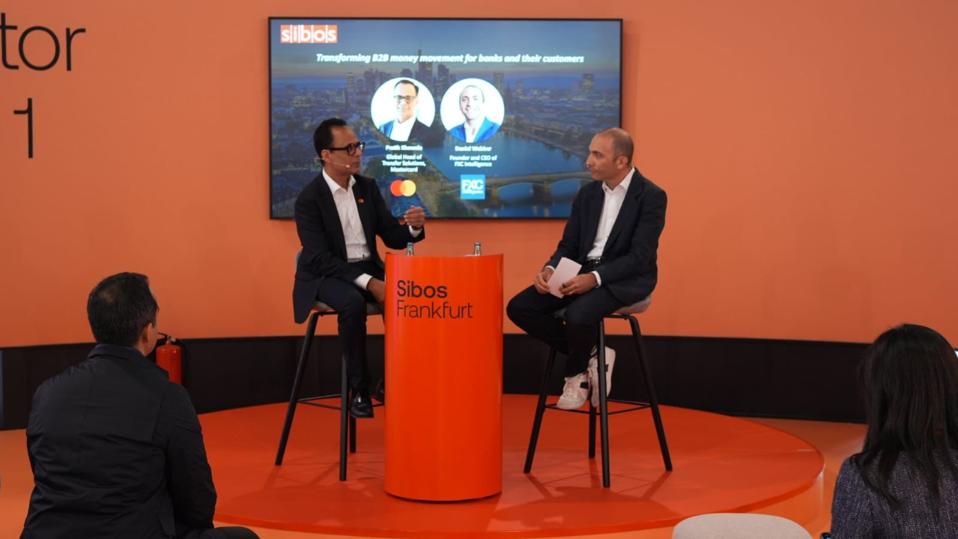At Sibos in Frankfurt, the payments industry’s annual gathering of bankers, regulators, and fintech leaders, two themes dominated the agenda: artificial intelligence and stablecoins. Beneath the buzz, however, the most practical development came from Mastercard and Corpay. The announcement of real-time cross-border payments in 22 new markets highlights Mastercard’s quiet reinvention, from a company once defined by cards to one positioning itself as a global money movement network spanning Asia, Europe, the Middle East, Africa, and Latin America.
For small and mid-sized enterprises (SMEs), the impact could be significant. Faster access to global markets, lower transaction costs, and greater transparency in settlement times represent more than just efficiency gains. For a business struggling to manage liquidity across borders, being able to move money with the same ease as buying a coffee locally could be the difference between scaling up or stalling out.
Why Cross-Border Payments Remain Broken
Global cross-border payments are projected to surpass $250 trillion by 2027, driven by trade, disbursements, and remittances. SMEs account for 43% of total business-initiated flows, yet they remain severely under-served. Banks processed 92% of total B2B cross-border flows in 2023, but their share fell to 76% for SME transactions, underscoring the mismatch between what smaller firms need and what incumbents deliver.
The opacity and complexity of cross-border payments are not distributed equally among participants. International transfers can still take up to five days. For an enterprise with strong balance sheets, this may be tolerable. For an SME with thin margins, the delay can mean the difference between closing down or staying open.
Pratik Khowala, who leads Mastercard’s Global Transfer Solutions, pointed to the root causes. “When you hear account-to-account cross-border, the compliance risk that it brings is very high,” he noted. “The friction point of compliance and regulation is the largest, followed by acceptance and user experience.”
Historically, banks optimized their networks for large corporations rather than smaller firms. “SMEs have been under-served because banks were built to handle high-value, high-touch transactions,” Khowala explained. “Our goal is that in two years, SMEs can transact cross-border the way consumers do, through their same banking app, end-to-end.”
Mastercard’s Data and AI Advantage in Cross-Border Payments
The expansion with Corpay is part of Mastercard’s broader strategy to reposition itself as a global money movement network. Its Move platform already spans more than 200 countries and territories, supports 150 currencies, and reaches 95% of the world’s banked population. Extending that coverage to 22 new markets strengthens its ability to serve as the backbone of international commerce.
Data remains Mastercard’s critical edge. “We have two decades of investment in cleansing and structuring payments data,” explained Raj Seshadri, the company’s Chief Commercial Payments Officer. “Scale plus quality matters, and that allows us to use AI for fraud prevention, compliance, and FX optimization in ways newer entrants cannot.”
Artificial intelligence is not positioned as a consumer-facing tool but as embedded infrastructure. It powers fraud screening in real time, dynamically routes payments across multiple rails, and reduces the costly exceptions that can force transactions to bounce back. For SMEs, these are not marginal improvements but direct cost savings and liquidity gains.
Alan Marquard, a Mastercard Fellow who helped create its transfer solutions division, emphasized the pragmatic balance. “You cannot replace correspondent banking overnight,” he remarked. “What we are building is a digital orchestration layer on top of Swift messaging.” By ensuring all counterparties in a transaction see the same data upfront, rejection rates fall and liquidity is preserved.
The Future of Cross-Border Payments
Competitors are racing to modernize account-to-account flows. New tools for agent-based AI commerce, programmable settlement, and alternative rails are capturing investment and headlines. Mastercard is moving quickly by embedding orchestration and intelligence into existing systems, using its scale, trust, and regulatory reach to make these innovations real.
At the same time, capital is flowing into firms that link traditional finance with digital assets. Nearly $2 billion was invested in crypto and blockchain startups in Q2 2025. Success will hinge on whether this innovation becomes accessible to SMEs, who remain the lifeblood of local economies.
What was once the fiefdom of early-stage disruptors is now a battleground for incumbents. Mastercard is sending a clear message: the future of cross-border payments will be built on scale, inclusion, and trust.

